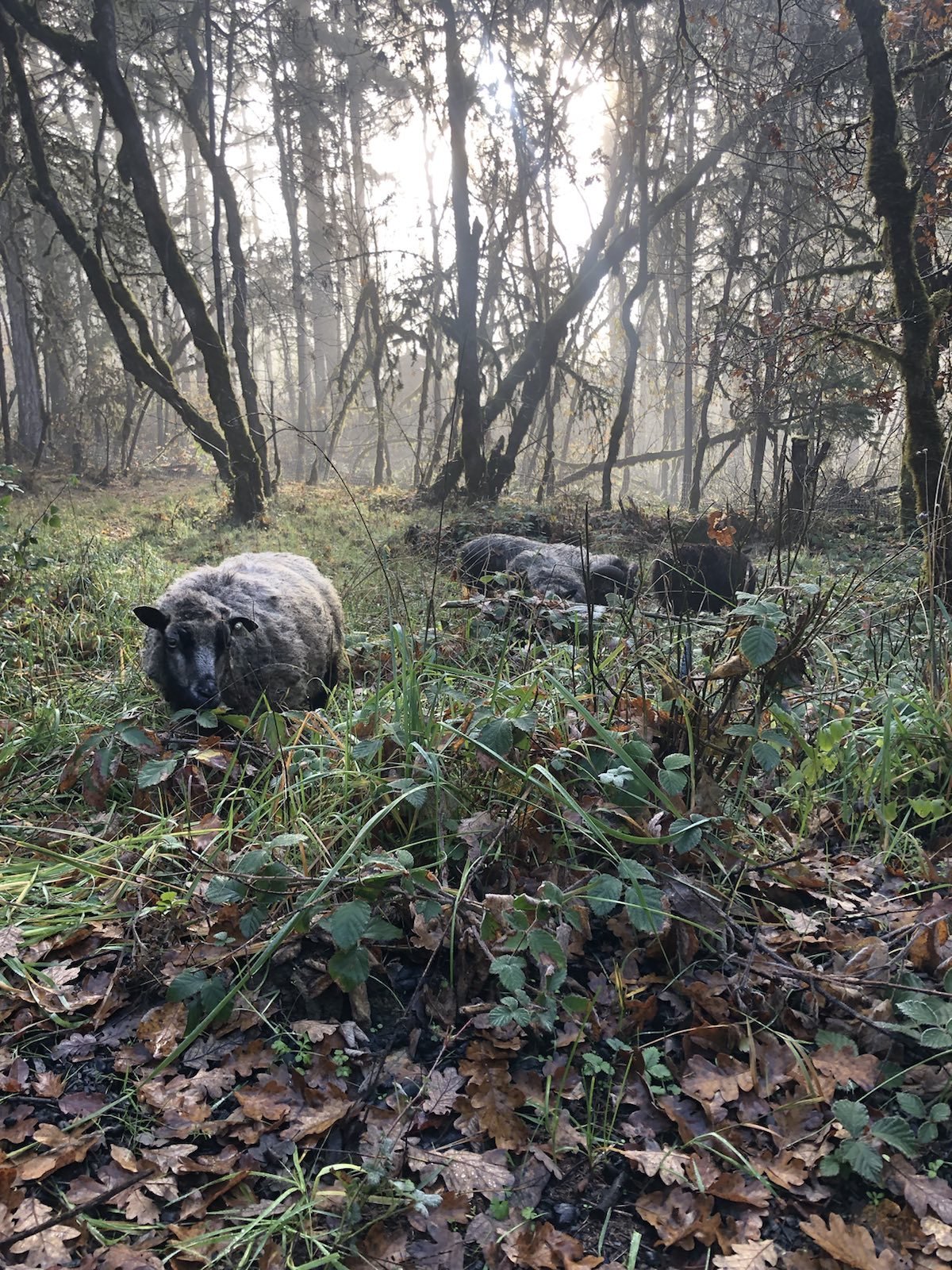
Agroforestry
CRL’s agroforestry program works across Oregon to grow a more equitable, biodiverse, and climate adaptive farm and forest economy rooted in the regeneration of ecosystems and the enhancement of livelihoods through agroforestry. Our work is accomplished by supporting and advancing land based projects, collaborating across networks of mutual support to elevate agroforestry adoption, developing educational materials and workshops, and undertaking research across the region.
Through regional networks that stretch across multiple states, we also partner to advance agroforestry across the range of the maritime, mediterranean, and desert climate zones of the West Coast.
(Credit: Erik Hoffner, Bo Janssan, Abel Kloster)
About Agroforestry
Adapted from the USDA National Agroforestry Center
Agroforestry is a modern name for an ancient system of land use applied worldwide that integrates trees with other crops and/or animals. As a regenerative land use system, agroforestry presents hope at a critical time. It has the capacity to increase food and other resources while reintegrating ecosystem services and habitat, helping to adapt and mitigate climate impacts, and revitalizing Indigenous agroecosystems which have utilized agroforestry practices for time immemorial in our region.
Agroforestry is as diverse in its application as the landscapes and cultures that work with it. Although myriad agroforestry practices exist worldwide, across the United States, agroforestry has often been categorized into five overarching systems: alley cropping, windbreaks, silvopasture, riparian buffers, and forest farming. Regional adaptation of agroforestry practices in the Pacific Northwest, may lead to nuanced variations of these five main systems.
Pacific Northwest Handbook for Agroforestry Planning and Design
Presently, the Center for Rural Livelihoods is leading an initiative to develop a handbook for Pacific Northwest Agroforestry Planning and Design. This handbook will be released as an open source downloadable manual in the spring of 2025. Thanks to the support of Western Sustainable Agriculture Research and Education (WSARE), and a partnership with Agroforestry Northwest, Washington State University, Oregon State University, and the National Agroforestry Center, this handbook will be accompanied by a series of videos on Northwest Agroforestry, a webinar series, and farm visits.
Free Silvopasture Advising
Free Technical Support on Silvopasture for Ranchers Across the Willamette Valley. Center for Rural Livelihoods is partnering with the Upper Willamette Stewardship Network’s Working Lands Program and the Oregon Pasture Network to provide technical advice to ranchers seeking to adopt sustainable grazing practices. Any rancher interested in undertaking silvopasture projects - either adding trees to pastures or introducing livestock to existing forest stands - can get free technical support through an on-site walkabout with our agroforester, Abel Kloster.
These services are offered as a component of a grant funded program, The Grazing Lands Conservation Initiative (GLCI). A partnership of farm support and conservation organizations that strives to support managers of grazing lands.
This program provides a variety of opportunities for farmers & ranchers committed to protecting the welfare of their animals, soil, air, and water resources. Additional opportunities through GLCI include:
Help developing grazing plans;
access to online and in-person workshops;
and an opportunity to join a peer-to-peer learning network.
To request a consultation, complete a short interest form and be sure to select "silvopasture & forest grazing" from the list of options. To learn more about this program visit the GLCI webpage, or contact Penny Feltner at penny@coastfork.org.
Workshops and Events
Please see our Upcoming Events page for agroforestry workshops and other events.











